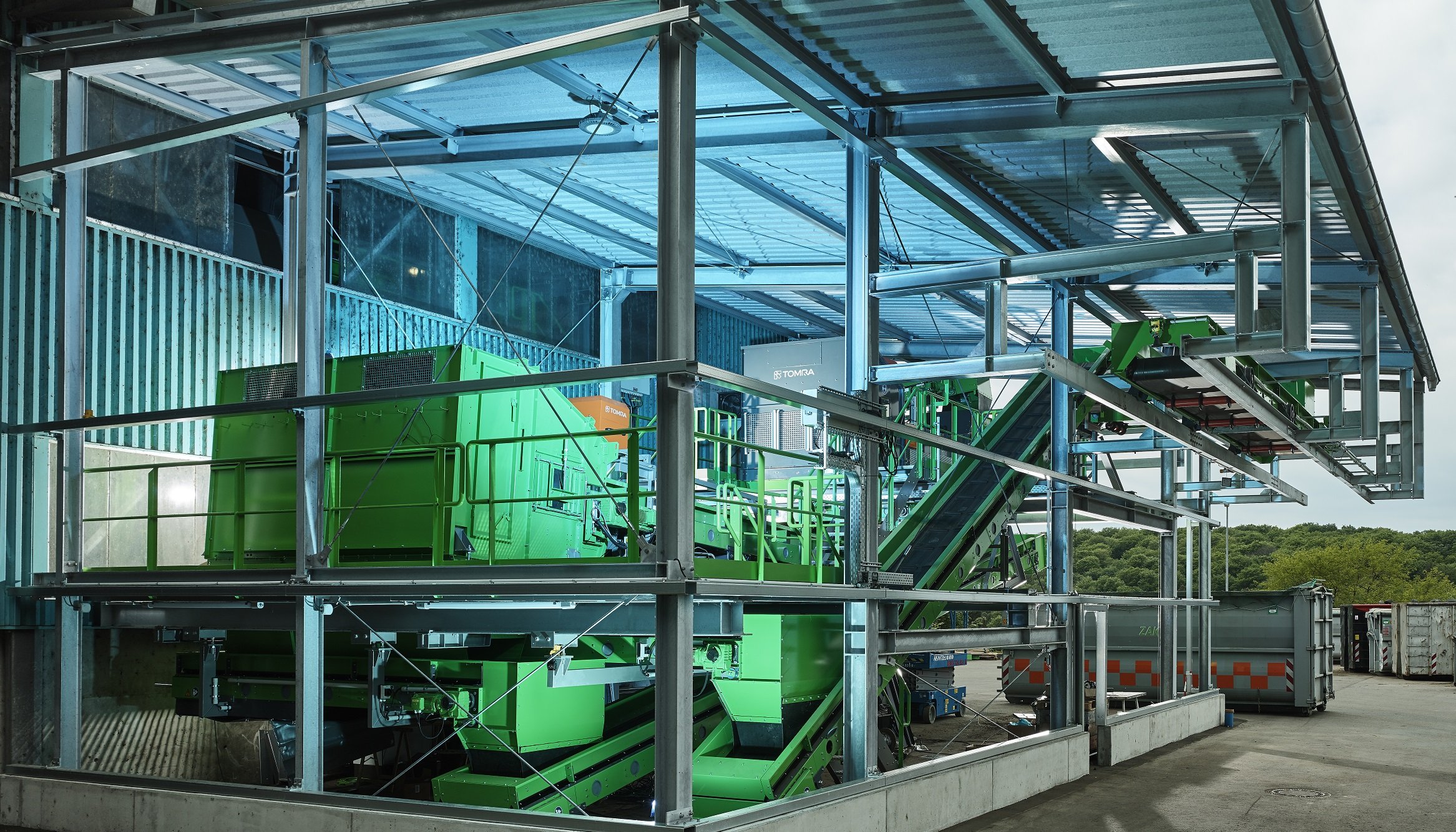The quantity of bio-waste has multiplied by almost five in the last 25 years. The bio-waste competence centre at ZAK – the central waste management centre in Kaiserslautern – recovers approximately 60,000 tonnes of bio-waste every year and converts it into power, district heating and quality compost. The problem: on average bio-waste contains approximately 3.5 percent of foreign materials such as glass, plastic or metal. This is evidently too much, as the state waste management company (LAGA) recently complained. In addition to this the rules for compost production are also becoming noticeably stricter. ZAK has now invested approximately 1.8 million Euros in sensor-supported sorting technology from TOMRA Sorting (Mülheim-Kärlich).
ZAK Board Member Jan Deubig is seeing an increased irritation with waste separation among the population although the collection of bio-waste is certainly both economically and ecologically meaningful. In no other area has it been possible to better close the regional materials cycle. He tells us that we can see that the proportion of foreign materials is very dependent on the settlement structure and the time of year, as well as the fee system. “Despite the new sorting system at ZAK, the population is not released from its obligation to collect bio-waste diligently,” says Deubig. According to the ZAK Board Member separate collection is reasonable and urgently needed. Besides protecting the climate and resources there is also a further benefit: the increase in bio-waste collected and the associated reduction of residual waste create cost savings and in turn benefit the fee payer. Despite all the technology Jan Deubig is still aware: “Nobody sorts better than a private household.”
Dr. Thomas Griese, Secretary of State in the Ministry of the Environment of the Rhineland-Palatinate, is also calling for reconsideration: “Bio-waste is a valuable raw material. ZAK is showing in an exemplary way that the separate collection of bio-waste is worthwhile for many reasons: clever technology is used to produce bio-gas and thus power and heat from bio-waste and making valuable compost from what is left.” The new, innovative sorting system and also the environmental formation of the centre help, according to Dr. Thomas Griese, to utilize the raw materials in an optimum manner and to create awareness for it. This provides relief for the environment, the climate, municipalities and fee payers equally. “It is pleasing that the Rhineland-Palatinate achieved the highest level of bio-waste collection in the whole of Germany statistically with approximately 160 kilograms per person.
Dr. Michael Kern, Managing Director of the Witzenhausen Institute for Waste, the Environment and Energy is describing the investment in the new sorting technology as a ‘first step’ in the removal of foreign materials. He also appealed for the cooperation of all participants – “both before and after the waste bin.” The avoidance of waste should be at the forefront but every German citizen still simply throws away an average of 80 kilograms of food every year. The fact that two-thirds of this ends up in the residual waste and not in bio-waste goes some way to explaining the dilemma.
László Székely, a development engineer at TOMRA Sorting, explains the functioning of the two sorting systems AUTOSORT and X-TRACT. Bio-waste on the conveyor belt is recognized by the sensors in the infrared spectrometer and by electro-magnetic sensors. If the technology discovers particles that should be rejected then individual valves are opened at exact positions and the material rejected with the help of compressed air. The sorted material is separated into two groups. The broadband x-rays, generated by an electrical x-ray source, work in a similar way. The radiation penetrates the material that is to be sorted and hits the x-ray camera at reduced strength. If the sensors recognize foreign materials that need rejection then these are removed.
TOMRA Sorting Recycling, based in Mülheim-Kärlich, develops and builds sensor-supported sorting systems for the recycling of waste and metals. More than 4,900 systems have already been installed in more than 50 countries. The company developed the first efficient Near-Infrared (NIR) technology for waste sorting applications and belongs to the Norwegian company TOMRA Systems ASA. This listed company was established in 1972 and achieved turnover of approximately 750 million euros last year with more than 3,500 employees.
And what happens to the "foreign materials" after they are removed from the bio-waste? Metals can be sold, impurities are incinerated in a waste-fueled power plant and the coarse, biogenic foreign materials can be utilized in the company’s own biomass heating plant. As with everything, the important thing about waste is always what you make of it.
Source: www.tomra.com



